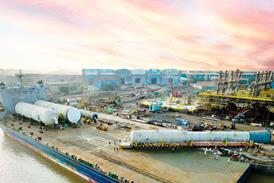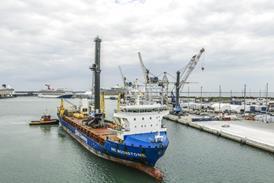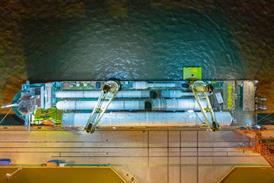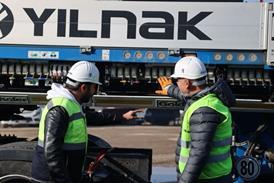Maritime industry analyst Drewry has identified the use of smart port technologies to facilitate ‘just in time’ ship arrivals as a way to significantly reduce greenhouse and pollutant gas emissions at ports.

Shipping accounts for almost 3 percent of global greenhouse gas (GHG) emissions. Naturally, for ports, ocean-going vessels are one of the major contributors to GHG and pollutant emissions in its vicinity. A major element of avoidable GHG emissions is the time ships spend waiting at anchor before moving onto a berth.
Drewry has analysed the performance of 193 of the world’s largest container ports, accounting for over 85 percent of global container trade, and showed that in 2023 total pre-berth waiting time remained 40 percent above 2019 levels. There is also considerable regional variation, driven by differences in traffic levels and port congestion.
Despite a recovery from the supply chain disruptions incurred during the pandemic, a significant number of vessels continue to operate on a ‘sail-fast-then-wait’ mantra, which results in the earliest arrival time at the port, no matter whether a berth is available or not. A just-in-time (JIT) arrival system aims to reduce waiting by aligning vessel speed on inbound voyages with berth availability. Such systems support the reduction of speed, lowering fuel consumption and emissions on the main voyage, and reducing the time spent and emissions generated at port anchorage zones.
To illustrate the potential benefits of JIT arrival systems, Drewry analysed congestion hotspot Dar es Salaam (Tanzania), where last year vessels waiting at anchor for over one week accounted for almost 70 percent of total waiting time incurred at the port – which in 2023 totalled almost 2,000 days.
“We looked at what effect reducing the average speed on the inbound voyage would have on time spent in the port’s anchorage zones (speed reduction only applied to vessels incurring 8 hours or more of waiting time upon arrival at the port). The results indicated that capping average inbound voyage speed to 10 knots during congested periods would have generated waiting time savings of 31 percent - equivalent to 23,000 CO2 equivalent of emissions. A more conservative scenario whereby average inbound voyage speed was capped at 12 knots generated waiting time savings of 16 percent (or 11,800 CO2 equivalent).”
Implementing JIT arrival systems requires integration of port, terminal and carrier management systems, as well as the capability to interface with other service providers which play a key role in supporting ship arrivals and departures at each port. Hence, organisational challenges to implementing these systems are high, especially in emerging markets. Many of the ports with the highest potential to benefit are also likely to be the least prepared to implement these solutions, said the analyst.
















